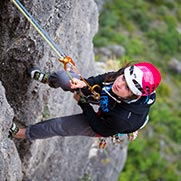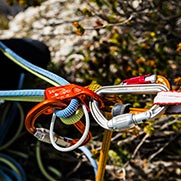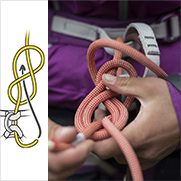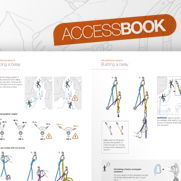Consequences of poor rope drag management in a common fall
The first series of tests represent configurations with very little friction (protection points aligned). This configuration is common in the gym, but it is rare to find aligned points on single or multi-pitch climbs, where poor rope management can create significant drag. It thus seems important to study the influence of drag on a common fall. We did a series of falls with different rope paths.
Warnings
- Carefully read the Instructions for Use used in this technical advice before consulting the advice itself. You must have already read and understood the information in the Instructions for Use to be able to understand this supplementary information.
- Mastering these techniques requires specific training. Work with a professional to confirm your ability to perform these techniques safely and independently before attempting them unsupervised.
- We provide examples of techniques related to your activity. There may be others that we do not describe here.
Only the drag was changed, the other parameters were constant.
The belayer was gradually raised to keep the same rope length regardless of the rope path.
It is important to note that the drag is greatly exaggerated, in order to highlight its influence. In practice, it is rare to face such significant drag.
Force on the anchor
Force on the climber
Force on the belayer
Notes
• Significant drag prevents the full length of the rope from absorbing the energy of the fall. Only the last section of rope stretches, the actual fall factor increases.
• The effective rope length being shorter, the climber has the sensation of getting a hard catch when the fall is arrested.
• The belayer is pulled less (or not at all) during the fall: his displacement does not contribute to dissipating a part of the energy in play.
• The effect is to slightly increase the forces on the climber and the redirect point.
Advice
Anticipating the rope path and extending offset anchor points helps avoid situations with high rope drag.









